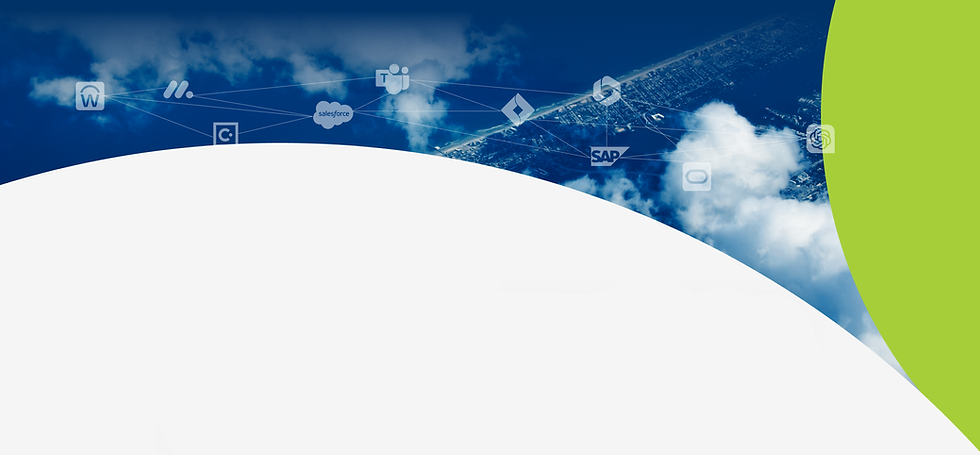


Prof. Avishai Wool
Short bio about author here Lorem ipsum dolor sit amet consectetur. Vitae donec tincidunt elementum quam laoreet duis sit enim. Duis mattis velit sit leo diam.
Tags
Share this article
7/22/21
Published
Prof. Avishai Wool discusses the complexities of mergers and acquisitions for application management and how organizations can securely navigate the transition
It comes as no surprise that the number of completed Mergers and Acquisitions (M&As) dropped significantly during the early stages of the pandemic as businesses closed ranks and focused on surviving rather than thriving. However, as we start to find some reprieve, many experts forecast that we’ll see an upturn in activity. In fact, by the end of 2020, M&A experienced a sudden surge and finished the year with only a 3% decline on 2019 levels.
Acquiring companies is more than just writing a cheque. There are hundreds of things to consider both big and small, from infrastructure to staffing, which can make or break a merger. With that in mind, what do businesses need to do in order to ensure a secure and successful transition?
When two worlds collide
For many businesses, a merger or acquisition is highly charged. There’s often excitement about new beginnings mixed with trepidation about major business changes, not least when it comes to IT security.
Mergers and acquisitions are like two planets colliding, each with their own intricate ecosystem. You have two enterprises running complex IT infrastructures with hundreds if not thousands of applications that don’t just simply integrate together. More often than not they perform replicated functions, which implies that some need to be used in parallel, while others need to be decommissioned and removed.
This means amending, altering, and updating thousands of policies to accommodate new connections, applications, servers, and firewalls without creating IT security risks or outages. In essence, from an IT security perspective, a merger or acquisition is a highly complicated project that, if not planned and implemented properly, can have a long-term impact on business operations.
Migrating and merging infrastructures
One thing a business will need before it can even start the M&A process is an exhaustive inventory of all business applications spanning both businesses. An auto-discovery tool can assist here, collecting data from any application that is active on the network and adding it to a list. This should allow the main business to create a map of network connectivity flows which will form the cornerstone of the migration from an application perspective.
Next comes security. A vulnerability assessment should be carried across both enterprise networks to identify any business-critical applications that may be put at risk. This assessment will give the main business the ability to effectively ‘rank’ applications and devices in terms of risk and necessity, allowing for priority lists to be created. This will help SecOps focus their efforts on crucial areas of the business that contain sensitive customer data, for instance.
By following these steps you’ll get a clear organizational view of the entire enterprise environment and be able to identify and map all the critical business applications, linking vulnerabilities and cyber risks to specific applications and prioritize remediation actions based on business-driven needs.
The power of automation
While the steps outlined above will give you with an accurate picture of your IT topology and its business risk, this is only the first half of the story. Now you need to update security policies to support changes to business applications.
Automation is critical when it comes to maintaining security during a merger or acquisition. An alarming number of data breaches are due to firewall misconfigurations, often resulting from attempts to change policies manually in a complex network environment. This danger increases with M&A, because the two merging enterprises likely have different firewall setups in place, often mixing traditional with next-generation firewalls or firewalls that come from different vendors. Automation is therefore essential to ensure the firewall change management process is handled effectively and securely with minimal risk of misconfigurations.
Achieving true Zero-Touch automation in the network security domain is not an easy task but over time, you can let your automation solution run handsfree as you conduct more changes and gain trust through increasing automation levels step by step.
Our Security Management Solution enables IT and security teams to manage and control all their security devices – from cloud controls in public clouds, SDNs, and on-premise firewalls from one single console. With AlgoSec you can automate time-consuming security policy changes and proactively assess risk to ensure continuous compliance. It is our business-driven approach to security policy management that enables organizations to reduce business risk, ensure security and continuous compliance, and drive business agility.
Maintaining security throughout the transition
A merger or acquisition presents a range of IT challenges but ensuring business applications can continue to run securely throughout the transition is critical. If you take an application centric approach and utilize automation, you will be in the best position for the merger/migration and will ultimately drive long term success.
To learn more or speak to one of our security experts, schedule your personal demo.

Speak to one of our experts




